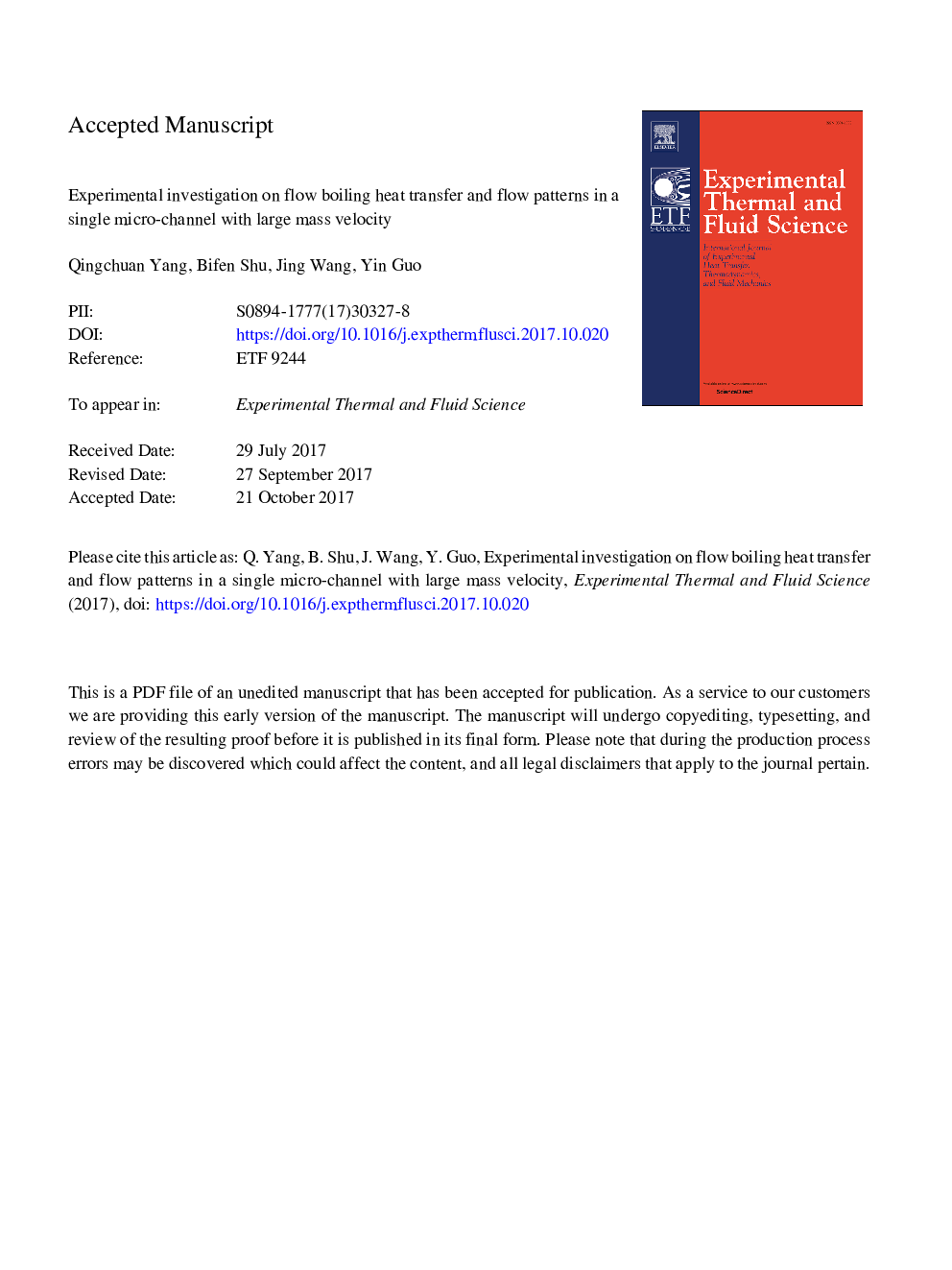| Article ID | Journal | Published Year | Pages | File Type |
|---|---|---|---|---|
| 7051899 | Experimental Thermal and Fluid Science | 2018 | 16 Pages |
Abstract
In this paper, a new single micro-channel heat sink with 0.55â¯Ãâ¯0.55â¯mm cross-section and 78â¯mm length based on R134a flow boiling is established to investigate the heat transfer coefficient and heat transfer mechanism with different inlet vapor quality. The experiment is conducted under the condition of heat flux in 0.918-6.993â¯kW/m2, mass velocity in 1821-4115â¯kg/(m2â¯s) and original saturation temperature in 20â¯Â°C. In the study, the relationship between various inlet vapor quality and average heat transfer coefficient is discussed, and the heat transfer mechanism is illustrated by the flow patterns captured by the high-speed camera with microscope lenses. Four major flow patterns are found in the experiment: bubbly, slug, churn and annular/wavy-annular flow, they appear in different inlet vapor quality regions. The result shows that the heat transfer coefficient increases with increasing inlet quality in low inlet quality dominated by nucleate boiling, but decreases in high inlet quality dominated by convective boiling. In the middle inlet quality, the heat transfer coefficient starts to decrease. Interestingly the forming process of churn flow is clearly seen in the experiment, it is formed by two steps: the bubble formation is restricted by the liquid film of a long vapor slug; the bubble tears apart the liquid film. It results the heat transfer mechanism of churn flow is a fierce confrontation of nucleate boiling and convective boiling. The effects of heat flux and mass velocity during different inlet quality region are also discussed.
Related Topics
Physical Sciences and Engineering
Chemical Engineering
Fluid Flow and Transfer Processes
Authors
Qingchuan Yang, Bifen Shu, Jing Wang, Yin Guo,
